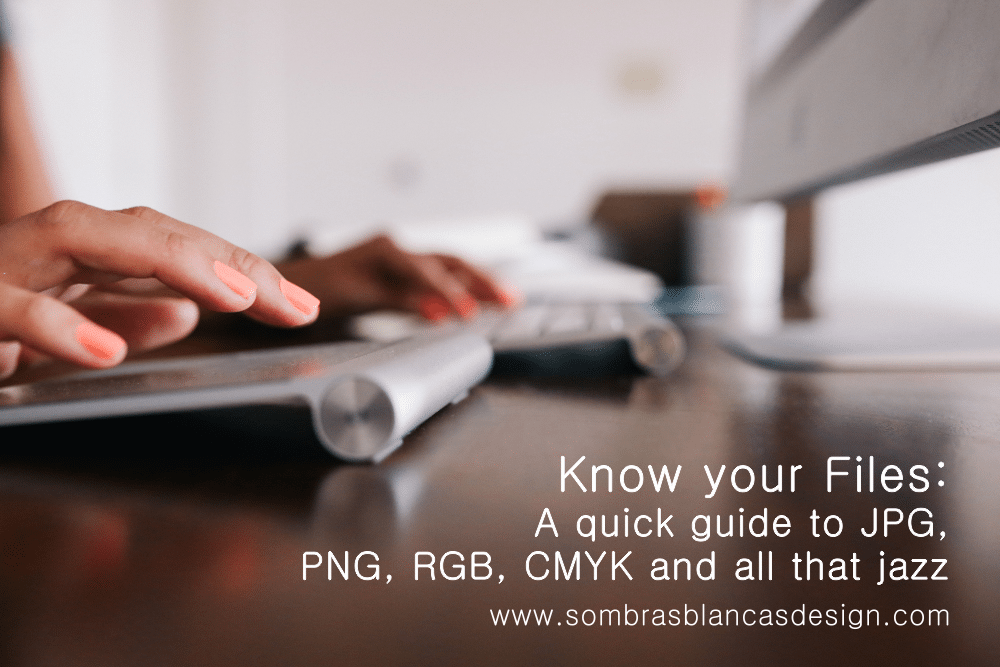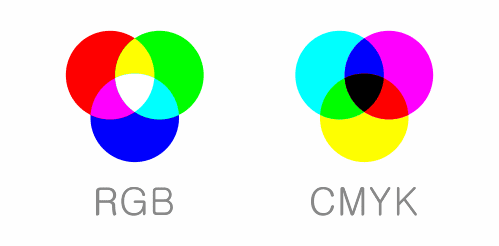Know your files: A quick guide to JPG, PNG, RGB, CMYK and all that jazz
I’m sure every small business owner with a minimum of online presence has asked him/herself these questions at least once: Is it better to use my logo in PNG or JPG for this? What’s a vector file? What’s the difference between RGB and CMYK colors? Even if you aren’t online the time always comes when you have to order some profesionally printed business cards or posters and you are asked to send the design in AI format. What does that even mean? Let’s find out!
JPG and PNG: image file formats
JPG or JPEG stands for Joint Photographic Experts Group and it is one of the most commonly used formats for image files on the internet. It was originally developed to be a standard for professional photographers. JPG is a compressed file. This means when you convert a vector file or a high quality photo to JPG, sections of the image are converted to blocks of pixels or “tiles”. This have the advantage of reducing the file weight but also causes a loss of image quality that increases when editing and saving the file repeatedly. It works well for photographs but not so much for line art and computer generated graphics.
PNG stands for Portable Network Graphics and is a lossless compression file format which makes it perfect for line art, text-heavy images and logos. The great advantage of this format is it supports variable transparency, even when uploading the image to the internet. This is really useful for business owners in many uses, such as uploading a logo and inserting it on a website. You won’t need to worry if the background is colored or textured: if you have a transparent background PNG file your logo will appear directly on top of the website background without a white anti-aesthetic rectangle around it.
What is a vector file?
Vector files are constructed using mathematical formulas rather than pixels. This means you can print from a vector file on any size you need without losing quality. That’s why you will probably be asked for a vector file if you are planning to print a huge billboard. Can you imagine the weight of a 10 metres long JPEG file? I can tell from my own experience if you ever try to generate an image file that big you will need to restart your software and even your computer after an endless wait without any results (unless you have stolen a computer from NASA. If that’s the case, go ahead).
Another great advantage of this type of files is they are completely editable -using the proper software- which comes in handy when you want to update your branding colors or your business card address. It is possible to pull apart and separate from the background all the elements on the graphic. Your business logo and brand graphics should be created as a vector and your designer should provide those files so you can keep them safe on your computer in case you need future modifications or professional printing.
Some commonly used vector files are EPS, AI and PDF.
RGB and CMYK: color systems
RGB (Red – Green – Blue) is an additive, projected light color system. This means all colors begin with black “darkness”, to which different color “lights” are added to produce visible colors. When all these colors are mixed together the result is white. This color model is used in all devices employing light, such as computer monitors or mobile phones.
CMYK (Cyan – Magenta – Yellow – Black) is a subtractive, reflected light color system. All colors start with white “paper”, to which different color “inks” are added to absorb light that is reflected. To create black you need to mix cyan, magenta and yellow at 100%. This is almost impossible in reality and that’s why black is added to the system. The CMYK color range is a lot smaller than RGB so colors usually change when switching from RGB to CMYK.
When to use one or the other? Anything dealing with the web should always be in RGB and files for printing should be in CMYK, although some printing companies will ask for RGB files instead. Having your graphics in vector format saves you trouble as they can be used to easily export image files in one color system or the other.
I hope you have found this article useful. Don’t forget to share! :)
Get a free brand consultation
Do you have a brand already?
I can help you figure out its strengths and weaknesses and give you some tips on how to improve its online presence.
Are you thinking about starting your brand or redesigning your current one?
We can discuss some ideas, plan the next steps, and solve any questions you may have.
Fill in this form and I will get back to you in 1-2 business days with lots of useful info tailored to your business.



No Comments
Sorry, the comment form is closed at this time.